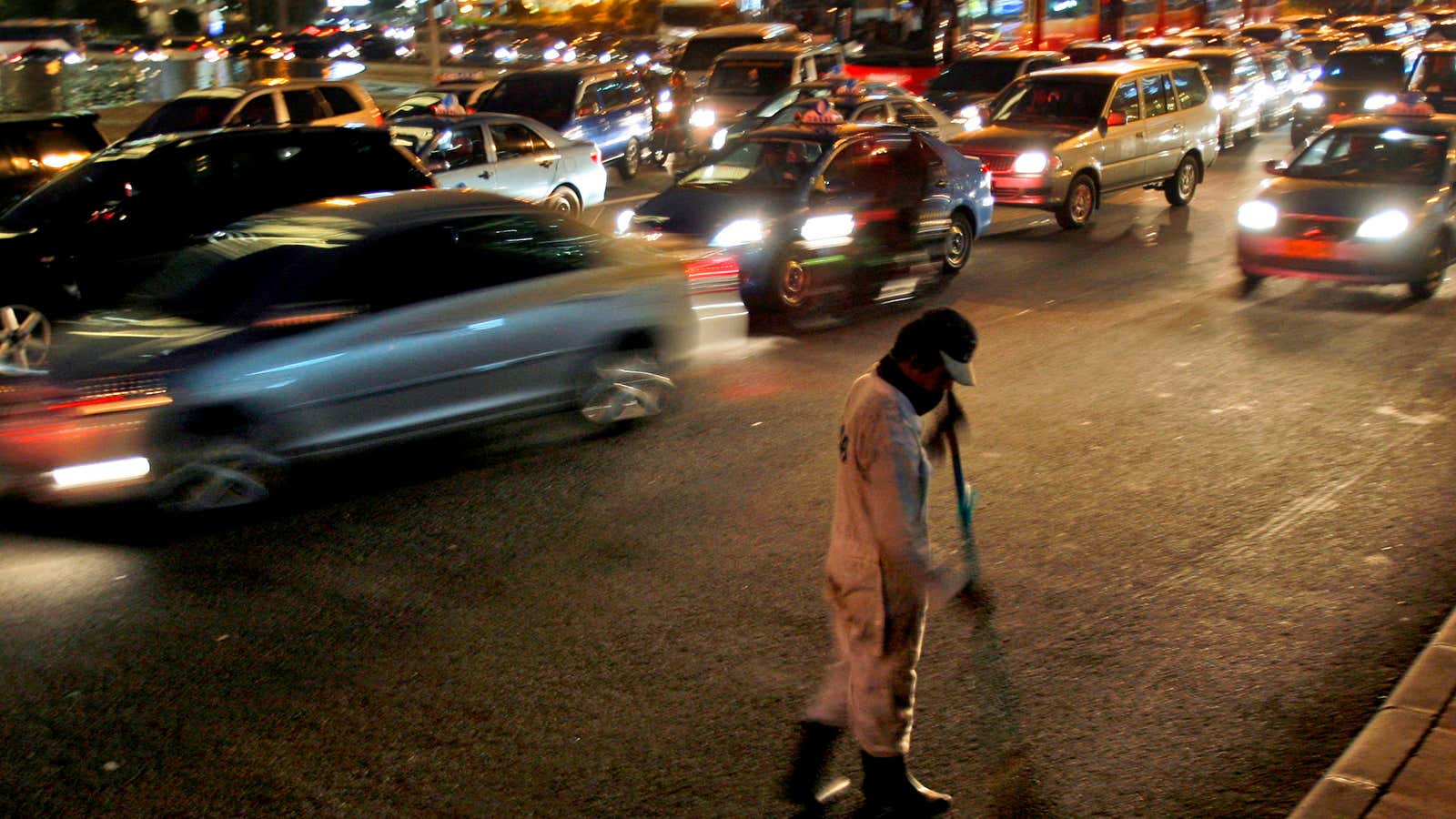This item has been corrected.
Indonesia has always been a tasty market for global auto giants. It has almost 40% of Southeast Asia’s population, an economy that’s grown faster than 4% for a decade, and a car market that’s expected to grow faster than China’s. And now, with new tax incentives for low-cost green cars, the fight for Indonesia’s car market is set to intensify.
The new rules reduce the luxury-goods tax that is usually applied to cars, cutting it by 25% for cars that can run at least 20 kilometers on a liter of fuel (28 miles per gallon), 50% for 28 kilometers per liter, and up to 100% off for the most efficient cars. The current tax for new vehicles ranges from 10-75% depending on engine size. The eco-friendly vehicles must also be assembled in Indonesia and 84% of their components must be locally-made to get the tax exemptions.
Analysts estimate that tax breaks will push the prices of these cars towards the 100 million rupiah (around $10,100) mark. That should put them within reach for the millions of middle-class Indonesians who are looking to upgrade from motorcycles or used cars. And the potential for growth is enormous. IHS Automotive expects low-cost green cars to grow to about 35% of all passenger vehicles sold in Indonesia by 2020. Indonesian auto sales, buoyed by an expanding middle class, hit a record 1.12 million last year, according to data of the Association of Indonesian Automotive Manufacturers, or Gaikindo.
Japanese automakers, who command over 90% of the Indonesian auto market, are best placed to take advantage of the new rules. Toyota and Daihatsu have joint ventures with Indonesia’s largest automaker, Astra International. Both ventures have already announced plans to develop low cost green cars—the Toyota Agya and Daihatsu Ayla—to benefit from the tax breaks. Daihatsu expects to roll out the Ayla in the next two months and expects the model to swiftly start delivering one-fifth of its monthly sales. Toyota announced an ambitious $1.3 billion investment to double output in Indonesia.
Other global car companies are looking to join the fray too. Mitsubishi is considering producing its Mirage subcompact in Indonesia to take advantage of the tax breaks. Nissan is finalizing plans to introduce a car that meets the fuel consumption and local-sourcing requirements, and is expected to begin production early next year.
And with demand for light vehicles expected to grow 88% between now and 2019, global giants like General Motors, which recently restarted its Indonesian plant, and Suzuki cannot be far behind.
Correction: An earlier version of this article said that analysts estimated car prices could fall to 1 million rupiah, instead of 100 million.
